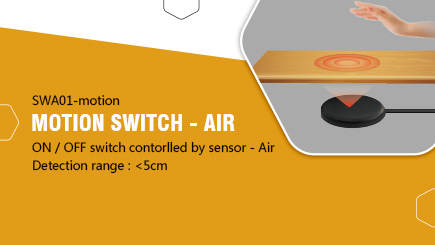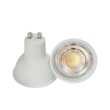Analysis of General Electric Design of Maintained LED Lighting
2017-06-01 09:28:42
The incandescent lamp behaves as a purely resistive load with self-stabilizing characteristics, and LED requires a current source. The luminous flux produced by the LED is approximately proportional to the current flowing through the device. The forward voltage of the LED increases with increasing current, but decreases with increasing temperature. In this regard, LED behaves like a diode.
LED has been used in electronic systems for many years, mainly used as an indicator for electronic equipment. Recent significant improvements in brightness and color depth mean that LEDs can now be used for a wider range of applications, from fun lighting in mobile phones and multimedia players, to traditional light sources in the commercial and home lighting applications.
The key driving force for the development of the LED lighting market is the emergence of high-brightness LEDs and intelligent LED controllers. Products designers with high-brightness LEDs face many design challenges, including thermal management, drive solutions, topology, and existing infrastructure.
To replace the existing dimmable incandescent or halogen light source, you must achieve such an electronic light drive system, it can not only work with the existing dimmer switch, and can copy the existing light source dimming performance. There are already power converters on the market that enable high-brightness LED / module designers to integrate electronic circuits in a cost-effective manner and benefit from the best thermal trade-offs.
Electricity dimming
Standard industrial and home dimmers are designed for incandescent lamps. Some of the more advanced models can be used with transformers connected to halogen lamps. Currently dedicated to the LED load of the mains dimmer is still very rare.
The cost of buying and installing a new dedicated dimmer can easily exceed the light source itself. So a LED lighting system that can work with existing dimming infrastructure, logarithmic dimming correction. This allows the dimming LEDs to be exactly the same as incandescent or halogen lamps. Built-in overheat protection, overcurrent protection, short circuit detection and maximum duty cycle limits. These features ensure the high reliability of certain fixtures, even in extreme operating conditions.
Since existing dimmers are designed for incandescent lamps (approximately resistive loads, mostly between 20W and 50W), some additional circuitry is required to allow them to be used in LED lighting systems. There are no incandescent dimmers on the market today, so there are a lot of different performance and parameter values on the market today.

LED characteristics
LEDs need a completely different type of drive from incandescent or halogen. The incandescent lamp behaves as a purely resistive load with self-stabilizing characteristics, and LED requires a current source. The luminous flux produced by the LED is approximately proportional to the current flowing through the device. The forward voltage of the LED increases with increasing current, but decreases with increasing temperature. In this regard, LED behaves like a diode. However, the forward voltage (VF) of the LED during operation is large. This voltage is related to the energy (eV) generated when electrons are converted to photons, which are directly related to the color of light. In addition, the VF values between different production lots can vary widely.
Serial / parallel configuration
In most applications where LEDs are used to replace existing light sources, multiple LEDs are required to connect to the drive because a single LED can not produce enough light flux. Dimming LEDs can be used in serial or parallel connection.
If the LED is connected via a serial connection, the total voltage on the LED chain is equal to the sum of the forward voltages (equal to the current on all LEDs).
Parallel configuration also provides redundancy. If a serial connection to the LED chain on a LED or connection problems, it will lead to open, the entire chain of all the LED will not light. However, if the parallel configuration, this situation will not happen. When using parallel configuration, it is recommended that each branch increase the current regulation mechanism to prevent thermal runaway and current or light is not equal. All in all, when the output and input voltage difference is the smallest, the power converter is the most efficient. When using a commercially available LED driver, a higher output voltage is allowed, allowing more LEDs to be connected in series.
If the LEDs are connected in parallel, the current will be distributed to each branch. However, since the forward voltage of an LED drops as the temperature rises, the configuration is inherently unstable. As the temperature rises, more and more current will flow to the branch with lower forward voltage, these branches will become brighter, and those with higher forward voltage of the slip will become Darker
However, one reason for using a parallel arrangement (or series-parallel combination) is that it allows a large number of LEDs to be combined with a safe supply voltage, and if you want to use a serial connection to achieve the same brightness, you may need a high Unacceptable voltage.





